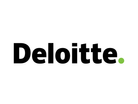Deloitte: AI Fraud Detection to Save Insurers $160bn by 2032

Insurance fraud ranks as the second-most costly white-collar crime in the United States, trailing only tax evasion.
The financial impact extends beyond insurers to consumers, who face annual premium increases of US$400 to US$700 to cover fraud-related losses, according to Federal Bureau of Investigation data.
Property and casualty insurers face mounting pressure as customer attrition rises following inflation-driven rate increases.
The Coalition Against Insurance Fraud reports that 78% of US consumers express concern about insurance fraud, understanding that fraudulent claims drive up their premiums.
Deloitte analysis suggests that AI-driven technologies deployed across the claims lifecycle could enable property and casualty insurers to reduce fraudulent claims and save between US$80bn and US$160bn by 2032.
This projection assumes widespread adoption of multimodal AI systems - advanced technologies that process and integrate data from multiple sources including text, images, audio, video and sensor data.
The scale of the problem drives urgency for technological solutions. An estimated 10% of property and casualty insurance claims contain fraudulent elements, resulting in annual losses of US$122bn.
This figure represents 40% of total insurance industry fraud losses.
Detection challenges persist across claim categories
Insurance fraud divides into two categories: soft fraud and hard fraud. Soft fraud involves inflating legitimate claims, such as overstating repair costs or exaggerating injuries.
Hard fraud encompasses premeditated actions to create false claims, including staged accidents, arson, fake thefts or using identical photographs across multiple insurance companies.
Soft fraud accounts for 60% of all incidents, partly because it proves difficult to detect and prosecute.
The infrequent interaction between policyholders and insurers - typically limited to annual premium payments and claim filing - restricts continuous oversight and allows fraudulent activities to persist undetected.
The COVID-19 pandemic accelerated digitalisation, creating new opportunities for fraudsters whilst spurring innovation in fraud detection solutions.
The fraud detection technology sector has expanded rapidly, with market estimates projecting growth from US$4bn in 2023 to US$32bn by 2032.
Regulatory pressure compounds the business case for advanced detection systems.
The National Association of Insurance Commissioners pushes insurers to implement sophisticated fraud detection capabilities, while legislation such as the Colorado AI Act requires algorithm-based models to avoid discrimination and bias when flagging risk.
AI deployment spans multiple data streams
Recent Deloitte survey data indicates that 35% of insurance executives identify fraud detection as a priority area for generative artificial intelligence applications over the next 12 months. Implementation spans several technical approaches.
Natural language processing - AI systems that analyse human language - examines textual data from claims forms, emails and social media posts to identify suspicious keywords and entities.
Claims containing inconsistent details or suspicious language receive flagging for further investigation.
Audio analysis applies speech recognition and sentiment analysis to customer calls, identifying signs of duress where permitted under regulations such as the European Union's AI Act on emotion inference for safety purposes.
Image analytics uncovers irregularities in metadata, manipulation, and repeated use of photographs across multiple claims.
Video analysis verifies damage occurrence and extent, identifies image authenticity, and highlights signs of tampering or staging.
Geospatial analysis employs satellite imagery and comprehensive 3D drone footage to verify damage extent and location that physical inspections might miss, while reducing injury risk to claims personnel at natural disaster sites.
Internet of Things data streams provide real-time surveillance through vehicle telematics systems that reconstruct accidents and verify claim legitimacy.
Smart home sensors, including water leak detectors and security cameras, gather evidence to verify claims and detect staged activities.
Simulation models replicate the behaviour of medical providers, repair shops, and other service providers under different scenarios in controlled virtual environments.
These systems identify patterns and deviations from standard industry practices, detecting instances of overbilling, unnecessary services, and coordinated activities between entities.
The combination of automated business rules, embedded AI and machine learning methods, text mining, anomaly detection, and network link analysis enables real-time scoring of millions of claims.
Multiple data modalities working together identify patterns and anomalies whilst enhancing investigative processes by reducing false positives, increasing detection rates of fraudulent claims, and reducing investigation costs.
Implementation requires human oversight and alignment with jurisdictional laws.
Over the past two decades, insurers have established special investigative units to detect and mitigate fraud, but anti-fraud leaders face challenges managing expenses and talent acquisition.
The technology enables human investigators to focus on complex fraudulent cases across the claims lifecycle.
Attracting and retaining skilled talent, combined with continued automation support, remains important for companies pursuing long-term anti-fraud objectives in the property claims and personal auto insurance segments, where complexity and data volume create opportunities for significant cost savings and efficiency improvements.
Make sure you check out the latest industry news and insights at InsurTech and be part of the conversation at our global conference series, FinTech LIVE.
Discover all our upcoming events and secure your tickets today.
InsurTech is a BizClik brand




